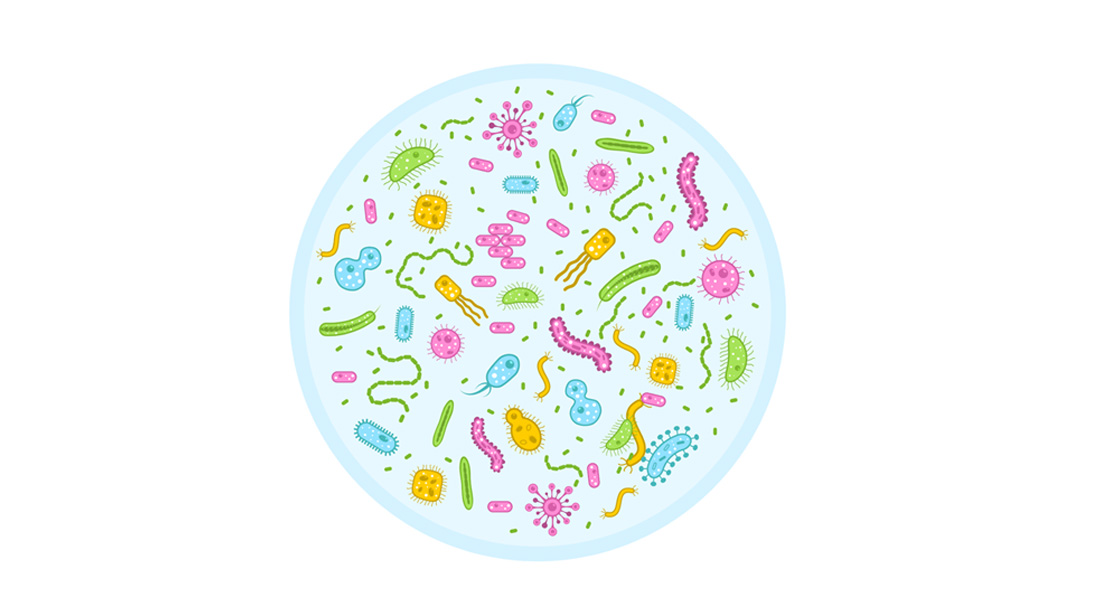Microorganisms
Microorganisms are tiny living organisms that are visible only under a microscope. They are present all around us and even inside our bodies. Despite their small size, microorganisms play a crucial role in our environment and in various biological processes. Microorganisms can be classified into two major types: Pathogenic and Non-Pathogenic.
Types of Microorganisms
1. Pathogenic Microorganisms
Pathogenic microorganisms are disease-causing organisms that can lead to infections in humans, animals, and plants.
These organisms can spread through direct contact, air, water, and contaminated surfaces.
Example: Mycobacterium tuberculosis causes tuberculosis and is transmitted through droplets of respiratory secretions from an infected person to an uninfected person.
2. Non-Pathogenic Microorganisms
Non-pathogenic microorganisms do not cause diseases and are often beneficial to humans.
Some non-pathogenic microorganisms play an essential role in maintaining homeostasis in the human body.
They are also widely used in the production of food, medicines, and other commercial products.
Example: Intestinal flora aids digestion and contributes to the synthesis of vitamins B and K.
Classification of Organisms
Taxonomy
Taxonomy is the science of classifying organisms based on their natural relationships.
Scientists observe the characteristics of organisms to classify them into various groups.
Organisms with similar traits are placed in the same group.
Carl Woese introduced a classification system based on molecular and cellular characteristics, dividing organisms into three domains:
Eubacteria (True bacteria)
Eukarya (All organisms with complex cells)
Archaea (Ancient bacteria)
Bacteria
General Characteristics of Bacteria
Bacteria are microscopic, unicellular organisms without a true nucleus (prokaryotic).
They have unique cell walls, reproduce through binary fission, and thrive in diverse environments.
Size: The smallest bacterium (Mycoplasma) measures around 0.3 μm in diameter, while Escherichia coli is 1.1 to 1.5 μm wide and 2.0 to 6.0 μm long.
Classification of Bacteria
Bacteria are classified based on the following characteristics:
-
Gram Reaction
Gram-positive (+ve)
Gram-negative (-ve) -
Shape
Cocci: Round or oval cells
Bacilli: Rod-shaped cells
Spirilla: Spiral-shaped bacteria
Vibrio: Curved or comma-shaped rods
Spirochetes: Slender, flexible spiral forms -
Atmospheric Requirements
Obligate Aerobes: Require oxygen to survive
Obligate Anaerobes: Survive in oxygen-free environments
Facultative Anaerobes: Can survive with or without oxygen
Capnophiles: Thrive in high carbon dioxide levels -
Endospore Formation
Some bacteria form endospores to survive unfavorable conditions.
Example: Bacillus and Clostridium species.
Bacterial Motility
Many bacteria move using flagella, which are thread-like locomotor appendages.
Flagella rotate to enable the bacteria to swim, with speeds ranging from 20 to 90 μm/second.
Types of Flagella
Monotrichous: A single flagellum at one end.
Amphitrichous: A flagellum on both ends.
Lophotrichous: Multiple flagella at one or both ends.
Peritrichous: Flagella distributed all over the bacterial surface.
Endospores
Endospores are resistant, dormant structures formed by certain bacteria to withstand harsh conditions.
They are characterized by extreme resistance to heat, radiation, and disinfectants.
Example: Bacillus and Clostridium species produce endospores.
Sporulation Process
DNA replication and axial filament formation.
Formation of a forespore.
Engulfment of the forespore by the parent cell.
Cortex formation with calcium and dipicolinic acid.
Formation of protein coats.
Maturation of the endospore.
Viruses
General Characteristics of Viruses
Viruses are intracellular parasites that require host cells to replicate.
They are non-living outside a host and can infect animals, plants, and even bacteria.
Viruses are made up of genetic material (DNA or RNA) surrounded by a protein coat called a capsid.
Virus Multiplication
The stages of virus multiplication include:
Absorption - Virus attaches to the host cell.
Penetration - Virus enters the cell.
Uncoating - Viral genome is released.
Replication - Viral components are synthesized.
Assembly - New virus particles are assembled.
Release - Viruses are released to infect new cells.
Fungi
General Characteristics of Fungi
Fungi are eukaryotic microorganisms with cell walls rich in chitin.
They reproduce asexually through spores and are classified into molds, yeasts, and dermatophytes.
Fungi play a vital role in decomposition and nutrient cycling.
Types of Fungi
Molds - Filamentous fungi that grow in long, branching structures.
Yeasts - Single-celled fungi that reproduce by budding.
Dermatophytes - Cause skin, hair, and nail infections.
Parasites
General Characteristics of Parasites
Parasites are organisms that live on or inside a host and derive nutrients at the host's expense.
They include protozoa, helminths, and arthropods.
Protozoa
Protozoa are unicellular, eukaryotic microorganisms.
They reproduce through asexual (binary or multiple fission) or sexual means.
They are classified into four groups based on their mode of movement:
Sporozoa (e.g., Plasmodium)
Flagellates (e.g., Trypanosoma)
Amoeboid (e.g., Entamoeba histolytica)
Ciliates (e.g., Balantidium coli)
MCQs
A. Gram positive bacteria
B. Fungi
C. Gram negative bacteria
D. Parasites
Answer Is A: Gram positive bacteria
A. Gram positive bacteria
B. Gram negative bacteria
C. Fungi
D. Parasites
Answer Is B: Gram negative bacteria
A. Monotrichous
B. Arnphitrichous
C. Lophotrichous
D. Peritrichous
Answer Is C: Lophotrichous
A. Escherichia coli
B. Mycoplasma
C. Salmonella typhi
D. Treponema pallidum
Answer Is B: Mycoplasma
A. Clostridium botulinum
B. Bacillus anthracis
C. Bacillus subtilis
D. Pseudomonas aeruginosa
Answer Is D: Pseudomonas aeruginosa
A. Cell wall
B. Bacterial flagella
C. Bacterial capsule
D. Bacterial spore
Answer Is C: Bacterial capsule
A. 20 seconds
B. 20 minutes
C. 20 hours
D. 20 days
Answer Is C: 20 hours
A. Mesophiles
B. Psychrophiles
C. Thermophiles
D. None of the above
Answer Is A: Mesophiles
A. Klebsiella sp.
B. Lactobacilli
C. Pseudomonas aeruginosa
D. Vibrio cholerae
Answer Is B: Lactobacilli
A. Microaerophilic bacteria
B. Capnophilic bacteria
C. Aerobic bacteria
D. None of the above
Answer Is B: Capnophilic bacteria
A. Anaerobic bacteria
B. Escherichia coli
C. Pseudomonas aeruginosa.
D. None of the above
Answer Is A: Anaerobic bacteria
A. Blood agar
B. Loeffier's serum slope
C. Chocolate agar
D. Bile salt agar
Answer Is D: Bile salt agar
A. Selective medium
B. Indicator medium
C. Enriched medium
D. None of the above
Answer Is A: Selective medium
A. Selective medium
B. Enrichment medium
C. Enriched medium
D. None of the above
Answer Is B: Enrichment medium
A. Tetrathionate broth
B. Alkaline peptone water
C. Selenite F broth
D. All of the above
Answer Is B: Alkaline peptone water
A. Klebsiella sp.
B. Yersinia enterocolitica
C. Yersinia pestis
D. Helicobacter pylori
Answer Is C: Yersinia pestis
A. Staphylococcus aureus
B. Salmonella typhi
C. Streptococcus pyogenes
D. Klebsiella sp.
Answer Is C: Streptococcus pyogenes
A. Neisseria meningitidis
B. Vibrio cholerae
C. Escherichia coli
D. Pleisiomonas sp.
Answer Is C: Escherichia coli
A. Proteus vulgaris
B. Providencia sp.
C. Morganella sp.
D. Klebsiella sp.
Answer Is D: Klebsiella sp
A. Methyl red test
B. Voges-Proskauer test
C. Urease test
D. Citrate utilisation test
Answer Is B: Voges-Proskauer test
A. Glucose
B. Lactose
C. Sucrose
D. Mannitol
Answer Is D: Mannitol
A. Lag phase
B. Stationary
C. Log
D. Decline
Answer Is C: Log
A. Lophotrichous
B. Amphitrichous
C. Monotrichous
D. Peritrichous
Answer Is A: Lophotrichous
A. Obligate aerobes
B. Facultative anaerobes
C. Obligate anaerobes
D. Microaerophilic
Answer Is B: Facultative anaerobes
A. Cells show uniform and regular staining
B. Cells show presence of intracellular storage granules
C. Spores are seen
D. Exotoxins are formed
Answer Is A: Cells show uniform and regular staining
A. Joule
B. Micron
C. Newton
D. Pascal
Answer Is B: Micron
A. Heterotrophs
B. Chemotrophs
C. Autotrophs
D. Phototrophs
Answer Is A: Heterotrophs
A. Lag phase
B. Phase of decline
C. Stationary phase
D. Logarithmic phase
Answer Is D: Logarithmic phase
A. E. coli
B. Mycobacterium
C. Clostridium
D. None of these
Answer Is B: Mycobacterium
A. Golden bacilli
B. Koch's bacillus
C. Magical bacilli
D. Hansen's bacilli
Answer Is D: Hansen's bacilli
A. Rifampicin
B. Acyclovir
C. Zidovudine
D. Dapsone
Answer Is D: Dapsone
A. Golden bacilli
B. Koch's bacillus
C. Magical bacilli
D. Hansen's bacilli
Answer Is B: Koch's bacillus
A. Respiration, cell division and sporulation are the functions of mesosome in bacteria
B. Capsule in bacteria enables adherence to surface and protection against phagocytosis
C. Heterotrophs are the bacteria that are unable to synthesize their own food materials
D. All of the above
Answer Is D: All of the above
A. Cocci are spherical shaped bacteria
B. Cocci present in chain is known as streptococci
C. Cocci present in the shape of grapes is known as staphylococci
D. All of the above
Answer Is D: All of the above
A. Staphylococci
B. Streptococci
C. Vibrio
D. Bacillus
Answer Is C: Vibrio
A. Gram staining
B. Acid Fast staining
C. Ziehl-Neelsen staining
D. Albert's staining
Answer Is A: Gram staining
A. Gram staining
B. Ziehl-Neelsen staining
C. Albert's staining
D. Eosin staining
Answer Is B: Ziehl-Neelsen staining
A. Acetone
B. Formaldehyde
C. Glutaraldehyde
D. Cidex
Answer Is A: Acetone
A. Dilute carbol fuchsin
B. Concentrated carbol fuchsin
C. Methyl violet
D. Iodine
Answer Is B: Concentrated carbol fuchsin
A. Carbol fuchsin
B. Luxol fast blue
C. Phosphotungstic acid
D. Thioflavin T
Answer Is C: Phosphotungstic acid



Free Videos